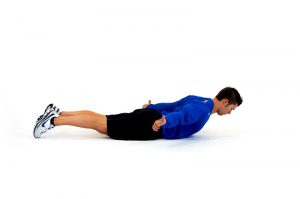Cueing is a vital skill that every fitness professional should master. It is essential for coaching proper technique and it creates a connection between you and your client, conveying how in-tune you are to their movement and performance.
Great cueing can even serve as an effective marketing tool, since it is a direct reflection of just how attentive you are to your clients. A potential client could be watching you (Yes, you are being watched-all the time!), considering you for their personal trainer and judging your skills based on the quality of your client interactions.
When teaching a movement to our clients, we typically use the “show-tell-do” approach to engage their visual, auditory and kinesthetic learning styles. But how can you improve the messaging to better connect with what works best for the client?
Here are five tips to improve your cues.
1. Avoid technical language (unless your client specifically asks for it), and when you do use it, ALWAYS explain it.
Your clients already know you're really smart ...you don't have to prove it to them. Technical language can actually take away from your client learning a movement because it can affect their confidence. Your client believes they should know what you're talking about when you use technical language. If they actually don’t know what you’re talking about, they can feel like you overestimated their ability to comprehend your fancy words …thus chipping away at their confidence.
And more importantly, they really just don't care about jargon.
Instead of saying "This exercise is horizontal adduction of the humerus in the frontal plane" (aka a chest press), try saying "Grab these handles and push them away from your body, I'll be coaching you along the way."
2. Don't talk so much or over-explain a movement.
I've heard trainers talk A LOT while a client is performing a movement. While their hearts are in the right place, their client probably isn't processing much. They're just trying to get the movement right, and therefore not focusing on your voice. Your chatter just becomes noise instead of being helpful.
Case and point, have you ever noticed when you're driving in an unfamiliar location and trying to get your bearings that you turn down the car stereo? Does turning down the volume help you see well? Probably not, but it does help you focus on what you're doing.
As an alternative, develop visual cues that your client quickly understands and can act on with minimal mental effort. For example, if I simply point at a client's foot, they know to straighten their feet.
3. Have your client "activate into" the desired pattern by first starting with the opposite pattern.
Have you ever tried to get your client to drop their shoulders because they were elevating them? Often we try to correct this by saying "get your shoulders down" to which your client says "ok" but their shoulders don't move a millimeter. It's because they can't feel what you're instructing.
Try this next time: instruct them to exaggerate shrugging their shoulders, and then ask them to do the opposite and exaggerate pulling them down ...Bam! You've just taught successful scapular depression by first initiating scapular elevation.
4. Tap the muscle you want the client to activate, not the one causing the problem.
Using our shoulder shrugging example above, a common cueing practice may be to tap on the top of a client's shoulder to kinesthetically cue them to drop their shoulders. This can actually worsen the compensation because tapping on a muscle can cause it to contract and tighten. Knowing this, a better strategy would be to actually tap the lower and middle trapezius of your client, cueing them to "pull your shoulders away from your ears."
5. Choose your words wisely. How you describe something can make all the difference.
A great example of an exercise that's challenging to perform correctly, and therefore cue, is the prone cobra on the floor. Often our clients go into excessive lumbar arch and elevate their shoulders. We struggle to keep their pelvis and back neutral and their scapula retracting and depressing as they pull their arms toward their feet. 
Instead of saying "engage your glutes and go into a neutral pelvis", try "squeeze your butt muscles and push your hips into the mat." Their mind (and therefore their body) better understands pushing their body into the floor instead of "activating their glutes."
Instead of saying "drop your shoulders," try "put your shoulder blades in your back pocket."
Notice the word choices above-they cue a mental target or purpose to the activation, they don't just cue muscle activation in a vacuum. This leads to a better understanding and visualization of the desired motion.
As you see, there are multiple ways to cue a single movement. You will quickly learn which particular strategies and methods make sense to each client that will ultimately strengthen your connection, demonstrate your attentiveness, and coach successful movement.
Resources:
NASM (National Academy of Sports Medicine). 2017. NASM Essentials of Personal Fitness Training (6th ed.). Burlington, MA: Jones and Bartlett Learning.











